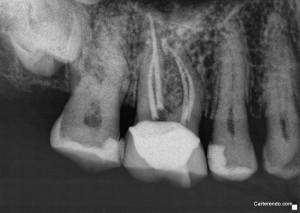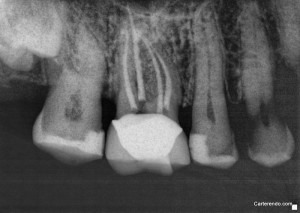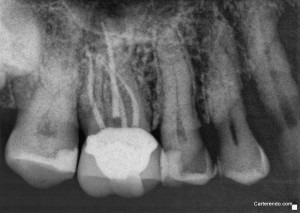Golf season is still here. As you might imagine, brevity is of the utmost importance.
Parallax: The effect whereby the position or direction of an object appears to differ when viewed from different positions, e.g., through the viewfinder and the lens of a camera.
While I first learned of this concept in grade school, in dental school I was reintroduced to the concept of parallax by way of the SLOB rule.
SLOB= Same lingual, opposite buccal.
What this means is that if the position of the patient and the sensor remain constant, you can make anatomical structures appear to move by changing the angle of the xray beam. If you are confused, don’t be. First, try the exercise as follows:
Take a look at an object nearby. Could be a doorknob, a coffee mug or something else around that size. If you close one eye (most human beings use stereoscopic vision which can complicate things-this is an endodontic blog, not opthalmology!), hold up your thumb until it blocks the object from view. Then, without moving your thumb (or the object you chose), move your head left and then right to reveal the object.
This is how the SLOB rule allows us to visualize multiple structures that may overlap in one radiographic plane by changing the angle that the beam takes to the sensor. The following case below is a good illustration of the concept.
Straight on
Beam Angled from the Mesial

Beam Angled from the Distal
The second mesiobuccal canal is palatal (or lingual for the purposes of the rule, SPOB just isn’t quite as catchy) to the first mesiobuccal canal anatomically. While each canal here appears to have been treated acceptably, sometimes this is not the case. When canal lengths or shapes have to be adjusted, you can do so by selecting different projection angles. By angling the beam from the mesial, the more lingual canal appears to move mesially. By angling the beam from the distal, the canal then seems to move distally.
Differentiating one canal from the other can also be done by using different things in each canal. I have placed gutta percha, K files, NiTi rotary files or Hedstrom files for this purpose. Unfortunately, that doesn’t warrant an entire blog post on its own. Not to mention, summer is almost over and I don’t want to waste another minute inside.
Thanks for reading!


